Larix Tunnel
LARIX T is a facility installed in a 100 m tunnel operating in the energy range from 20 keV to 1 MeV. The LARIX-T facility provides polychromatic gamma-ray beams from 20 keV up to 300 keV with high brightness, and polychromatic gamma-ray beams from 50 keV up to 1 MeV with low brightness. The facility is suitable for testing gamma-ray reflectors and low-weight gamma-ray detector prototypes when low-divergence beam and/or very long beamlines are needed.
LARIX T overview
The facility spans all the 100 m tunnel connecting LARIX-A to the smaller LARIX-B and can be operated to get polychromatic beams from 20 keV up to 1 MeV. LARIX-T features a 26.5 m long beamline, of which 21 m are inside a vacuum tube. The facility provides a gamma-ray beam obtained either by a high power X-ray generator or a low power portable betatron. The gamma-ray beam size is regulated by a fully motorized, adjustable collimator. The collimated beam reaches a 6D hexapod, where the examined sample can be positioned. A flat-panel scintillator imager and an HPGe spectrometer are available inside the tunnel, placed on a fully motorized carriage. The collimator and the sample positioning system are contained inside a class 105 clean room, temperature controlled.
LARIX-T Features Summary
- 100 meters tunnel;
- 21 meters beamline;
- X-ray source up to 320 kV;
- Gamma ray source (betatron) up to 2.5 MeV;
- Hexapod system (high precision positioner);
- Clean room class 100000 with thermal and humidity control;
- High definition imager (200 um spatial resolution ) and High purity Germanum spectrometers;
- 16 meters rail for positioning the detectors.

Schematic drawing of the LARIX-T beamline
Equipment
X/Gamma-ray Generators
The X-ray tube is mounted at the end of the tunnel, in an opportunely shielded area. The tube is equipped with a Tungsten anode and operates from 60 to 320 kV. The tube has two possible focal spot modes: a fine mode, with a focal spot of 0.4 mm diameter, and a broad mode, with focal spot of 1.0 mm diameter. The divergence of the beam is reduced by a 20 mm thick tungsten plate with a 3 mm diameter hole and a 50 mm thick lead shield with a 1 mm diameter hole. The tube can operate in continuum mode.
The X-ray tube is fully motorized: it can be moved up/down and left/right with a minimum step of 10 µm and it can be rotated along two different axes, with a minimum step of 0.01 deg.
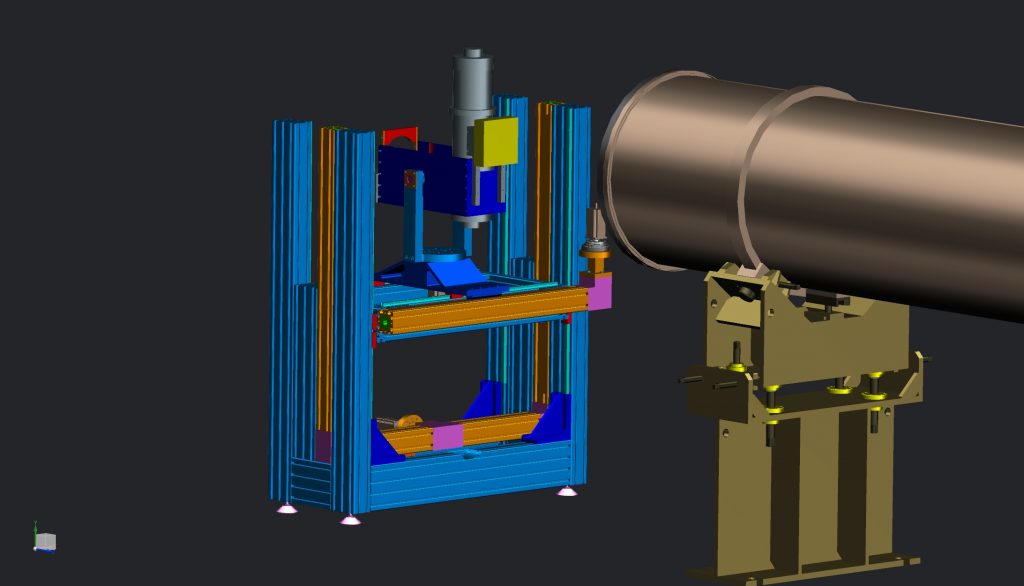
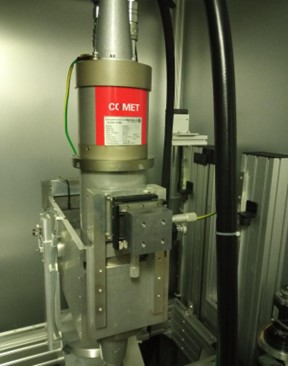
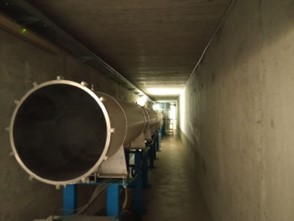
Left: CAD drawing of the X-ray source present at one end of the beam-line. The source is placed on a movable bench for z (vertical) and y (horizontal) shift. Center: the Bosello X-ray tube (Tungsten anode, continuum emission from few tens keV up to 320 keV). Right: the 21-m vacuum tube.
A portable betatron is also available. The betraton has a maximum voltage of 2.5 MV, a power of 310 W and a maximal focal spot dimension of 0.2 x 3 mm2.
Vacuum Beamline and Collimator
The X-ray beamline passes inside a 21 m long vacuum tube of 60 cm of diameter (pressure ≤ 1 mbar), with entrance and exit window in 3 mm thick carbon fiber.
A motorized, adjustable collimator is placed inside a clean room, after the vacuum tube. The collimator is fully motorized: it can be moved in 2-dimensions on the plane perpendicular (minimum step = 10 µm) to the beam and it can be rotated along three different axys (minimum step = 0.01 deg).
Each one of its 20 mm thick tungsten blades can be remotely adjusted from a minimum opening of 0 x 0 mm2 to a maximum of 30 x 30 mm2. Thanks to this collimation system, the divergence of the beam after the collimator is of the order of 100 arcsec.
Hexapod Sample Holder and Clean Room
The sample holder is placed inside the clean room. The sample holder consists of a movable bench which can be moved in the plane perpendicular to the beam, and a high precision hexapod positioner (model: Newport HPX-100), with 6 degrees of freedom (3 translations and 3 rotations) and maximum load of 20 kg.
The clean room (class better than 105, US FED STD 209E Cleanroom Standards) is provided with thermal and hygrometric control (temperature within 1 C, relative humidity = 60% within 10%).
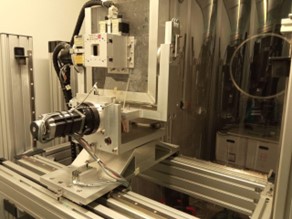
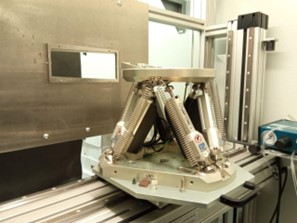
Left: the motorized collimator inside the clean room. Right: the hexapod sample holder.
Detectors
Both an imager and a spectrometer are available. The detector holder carriage is mounted on a rail and it can be moved from a minimum distance from the sample holder of 7 m to a maximum distance of 23 m. The carriage is motorized and the detectors can be moved in the plane perpendicular to the beam and along two different rotation axes.
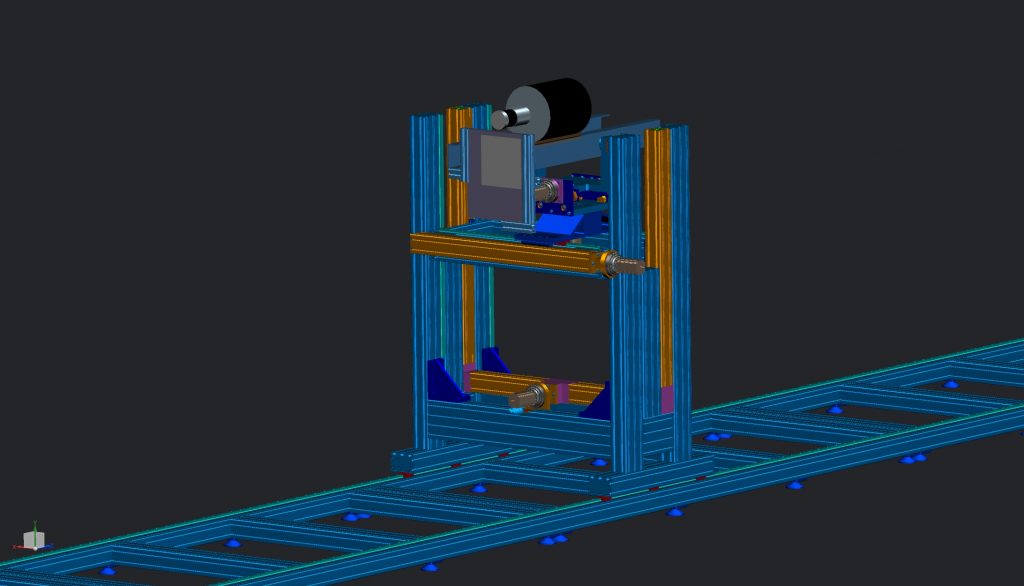

Left:Motorized table for supporting the detectors present in the LARIX Tunnel. The rails are ~16m long and the detector can be manually moved easily back and forth. Right: the imager and the spectrometer detectors available at LARIX-T.
The available imager is a Perkin Elmer flat panel imager (Perkin Elmer XRD 0822), which consists of CsI(Tl) scintillators directly deposited on Si photodiodes. The detector has a sensitive area of 204.8 x 204.8 mm2, with a pixel pitch of 200 µm (1024 x 1024 pixels).
The available spectrometer is a Nitrogen-cooled HPGe spectrometer, with a carbon fiber entrance window (AMETEK-ORTEC GEM-SP5020P). The detector sensor has a diameter of 50 mm and a thickness of 20 mm, granting an energy resolution of 300 eV @5.9 keV and 585 eV @122 keV.
